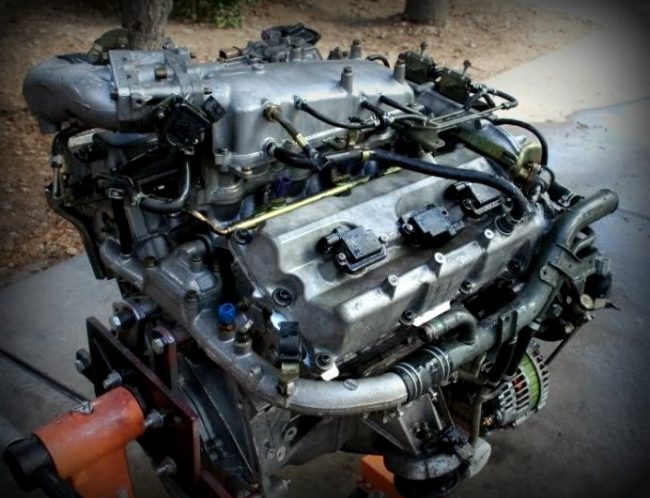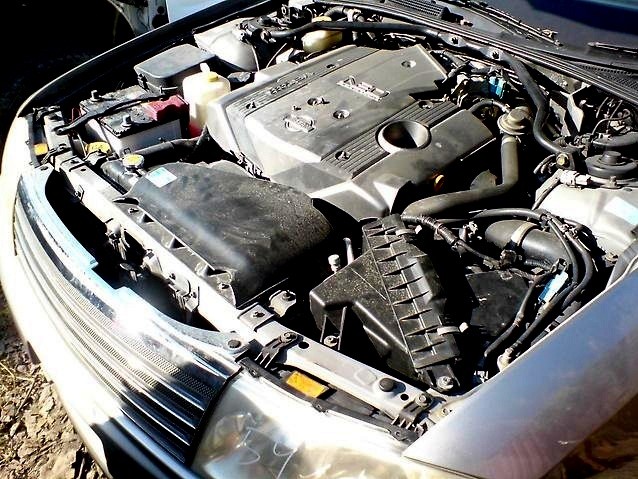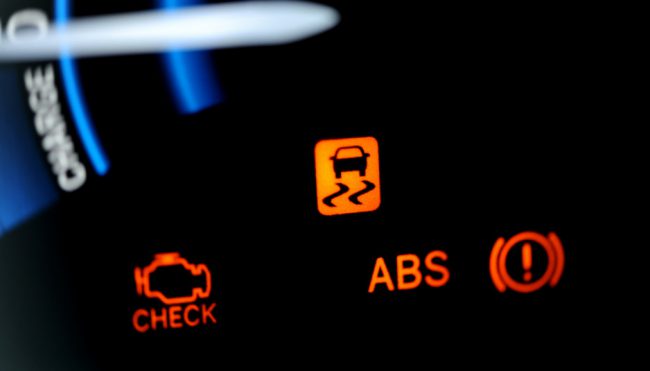
Nissan VQ30DET engine
Content
In 1994, Nissan created a line of business class sedans. They were produced with engines of the VQ series with a cylinder capacity of 2, 2.5 and 3 liters. The motors were good, but not perfect. The Japanese concern improved them gradually. For example, to reduce weight, the cast-iron cylinder block was made of aluminum, and the short-lived timing belt was replaced with a chain, which significantly increased its service life.

Later, the manufacturer decided to abandon the hydraulic lifters. This was necessary to increase the export of cars based on this engine to countries where low-quality and cheap mineral oils were actively used. Their use on engines with hydraulic compensators led to the failure of the latter.
Then they improved the intake and exhaust system, installed 2 camshafts on each side of the motor. All this led to an increase in power and torque of the power plant, and increased purge of the chambers laid the potential for forcing. As a result, a new modification appeared - VQ30DET. It was used already in 1995 and was even used on 2008 cars (Nissan Cima).
Characteristics and decoding of the name
The names of the range and models of Nissan engines make it clear their characteristics. VQ30DET stands for:
- V - designation of the structure (in this case, we mean the V-shaped structure).
- Q is the name of the series.
- 30 - cylinder volume (30 cubic dm. or 3 liters).
- D - designation of engines with 4 valves per cylinder.
- E - multi-point electronic petrol injection.
This makes it clear the basic parameters of the motor.
Extended Features:
| Maximum power | 270-280 l. With. (achieved at 6400 rpm) |
| Max. torque | 387 Nm achieved at 3600 rpm |
| Fuel | Gasoline AI-98 |
| Gasoline consumption | 6.1 l / 100 km - track. 12 l / 100 km - city. |
| engine's type | 6-cylinder, cylinder diameter - 93 mm. |
| Supercharger | Turbine |
| Compression ratio | 09.10.2018 |
| Oil used (depending on mileage and outside air temperature) | Viscosity 5W-30, 5W-40, 10W30 - 10W50, 15W-40, 15W-50, 20W-40, 20W-50 |
| Engine oil volume | 4 liters |
| Oil change intervals | After 15000 km. Taking into account the quality and distribution of non-original lubricants, it is advisable to replace it after 7500 km. |
| Oil consumption | Up to 500 grams per 1000 km. |
| Engine resource | Over 400 thousand kilometers (in practice) |
Vehicles with VQ30DET engine
This modification is used with the following machines:
- Nissan Cedric 9 and 10 generations - from 1995 to 2004.
- Nissan Cima 3-4 generations - from 1996 to 2010.
- Nissan Gloria 10-11 generations - from 1995 to 2004.
- Nissan Leopard 4 generations - from 1996 to 2000.
Many of these cars, including the 1995 Nissan Cedric, are still on a steady track due to the reliability and long engine life.

Neo technology
In 1996, the Mitsubishi concern developed and began mass production of engines with the GDI system. A feature of such internal combustion engines is the direct injection of gasoline into the cylinders under high pressure and with most of the air in the mixture (ratio 1:40). Nissan made an attempt to catch up with its direct competitor and also set about creating a similar fuel injection technology. A series of engines with direct fuel injection into the chambers received a prefix to the name - Neo Di.
The main element of the system is the high pressure fuel pump. Thanks to him, at idle, a pressure of 60 kPa is created, and while driving, it can rise to 90-120 kPa.
The engines of the DE family have undergone this modernization and since 1999 they have included models with NEO technology. They were equipped with modified camshafts and valve timing. These motors have become more technologically advanced and environmentally friendly, but at the same time their work was more dependent on electronic control. The power of the power plants has remained the same, but their harmful impact on the environment has decreased.
Malfunctions and problems of the VQ30DET engine
It was said above that this modification is devoid of hydraulic lifters, so once every 100 thousand kilometers it is necessary to adjust the valves - this is a design feature of this power plant.
There are complaints on the Internet from car owners with these engines about oil leaks through the dipstick. If you start the car and check the oil level, the entire dipstick may be covered in grease. At high speeds (5-6 thousand rpm), spitting from the probe is possible.

At the same time, the motor runs normally and does not overheat, however, the lubrication level drops, which in the future is fraught with oil starvation. It is believed that the cause may be gases in the crankcase, which seep there through the cylinders. This means that either the cylinders are worn out, or the rings. A similar problem does not occur often, but occurs on the VQ30 engine (and its modifications) with solid mileage.
Other vulnerabilities of these engines:
- Violation of the gas distribution phase.
- Detonation, which is often accompanied by increased fuel consumption. To solve this problem, cleaning the valves from soot is required.
- Faulty MAF sensors (mass air meters), which causes the engine to consume a huge amount of air - this creates a too lean mixture.
- Loss of pressure in the fuel system. Any of its elements can become unusable - injection pump, filters, pressure regulator.
- Malfunctioning injectors.
- Failure of the catalysts, which entails a loss of power.
 Often, owners of cars with these engines contact the service station with a complaint about the Check Engine light being on. Permanent or temporary tripping is not excluded (when one of the cylinders does not work well or does not work at all), which is accompanied by a loss of power.
Often, owners of cars with these engines contact the service station with a complaint about the Check Engine light being on. Permanent or temporary tripping is not excluded (when one of the cylinders does not work well or does not work at all), which is accompanied by a loss of power.
Often this is associated with a problem in the ignition system. If the “brains” evaluate the operation of the coils and determine any malfunction, then they inform the driver about this using the Check Engine light.
In this case, error P1320 is read. Unfortunately, you need to manually determine which coil is not working, which is a characteristic flaw in the engine diagnostic system.
Engines with Neo technology use EGR valves, which reduce the amount of nitrogen oxides in the exhaust gases. This device is capricious and demanding on the high quality of gasoline. When using low-quality fuel (in our country, the quality of gasoline is lower compared to fuel in Europe), the valve may become covered with soot and wedge. In this state, it does not work, so the fuel-air mixture supplied to the cylinders has the wrong proportions. This entails a decrease in power, increased gas mileage and rapid engine wear. At the same time, the Check engine light on the dashboard lights up. Note that the EGR valve is a problem for many engines where it is used, and not specifically for VQ30DE series engines.
Conclusion
This engine collects positive reviews among car owners - it is unpretentious in maintenance, reliable, and most importantly - durable. You can verify this yourself by looking at the sites for the sale of used cars. There are Nissan Cedric and Cima models of 1994-1995 on the market with over 250-300 thousand kilometers on the odometer. In this case, you can make an increase to the data on the device, since sellers often twist the “official” mileage.

